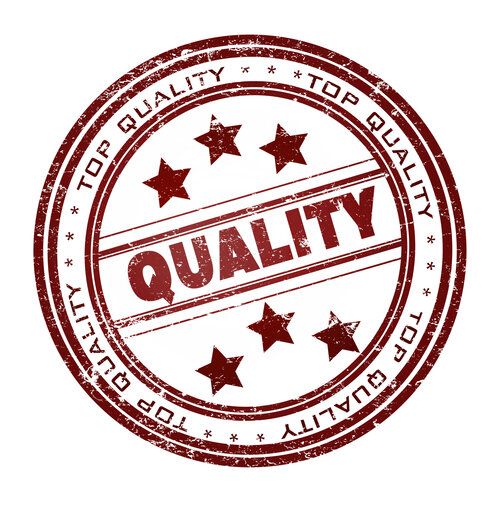Hyper-focused? Being second-best isn’t good enough.

Please, please, please – if your business is hyperfocused (ie. selling only one product or service), make sure it is the best out there.
I’m going to write this blog slightly less formally, but that’s because I’ve seen this happen again and again recently.
It’s summer, so naturally, my partner and I have been going to lots of markets and stalls scattered around Perth.
There’s a huge number of stalls to choose from, and there’s plenty of competition. The food stalls, the clothing stalls, and the trinket shops all wrestle against their direct counterparts, and all of them compete indirectly for two things: our attention and our wallets.
Recently, I’ve seen these shops get a bit wiser, and narrow their focus to one product. Most go so far as to brand their business after their product of choice. This is definitely the right strategy to use in this environment (I’ve spoken about this generally in my earlier blog posts).
However, if you’re going to name your business after and tie its success on one product, PLEASE make sure it is top-quality.
I don’t care if it costs you a little more in ingredients, processing, manpower, whatever. Quality will always win out in the long run. And yes, I mean always.
People talk about the best products. They use them as status symbols. They go out of their way to try it, and then tell their friends that they went, or used it. Often, the higher price is a badge of success. It’s a win-win.
The great thing is that high quality safeguards you against the competition in two main ways. The first is that your brand becomes associated with high quality, allowing you to charge more for future products. The second is that the higher profit margins you get from selling premium products allow you to invest more in research & development, which in turn means you are always at the cutting edge of your industry and protecting/growing market share.
Oh, and you’ll probably spend less on advertising because either it will sell itself and/or your market will be more targeted (probably to an audience with more disposable income as well).
If you’re not the best, you’re competing on price with all the others – and that ends up being a zero-sum game in the long run. It’s not fun, so avoid this where you can.
I’ll end there and keep it short, but there’s a few FAQ’s below about how to take the high-quality position in your market.
Have a read through, and if you or someone you know is looking for advice on market strategy and positioning, contact us anytime.
All the best of luck out there!
Jase
—-
Some FAQ’s:
Q. How do I know if I’m the best-quality product in my field?
A. If you’re a product-based business, there’s many ways to do this cheaply and effectively. It only takes two steps:
- Pick your top three competitors (or more if it won’t break the bank too much) and actually buy their product.
- Conduct ‘blind’ experiments with friends/family/your target market. Get them to describe why each product is good or not, and then ask them to rank it.
Don’t tell them the price.
If you’re the best, then that’s awesome. Think about raising your prices if you aren’t the most expensive.
If you’re not the best, work out how you can become the best, and keep testing until you are. Once you are, re-launch (this hits the reset button on any previous opinions your customer base has of your earlier product.)
Service based businesses are harder, but typically the best-in-field have the following characteristics:
- Frictionless
- On time and on budget
- Friendly
- Knowledgeable & thorough
- Goes above and beyond the brief
Q. I know I’m not the top-quality product in my industry, and it would cost a lot to change things to be so. What should I do?
A. It may cost a bit upfront to change things, but if you are a single-product business, you must do everything you can to be the best, otherwise you will not be able to compete long-term. If it does cost too much initially, though, focus on one key element of your product that could be better, and see if that can be improved cheaply. You may not get the economies of scale you’d get if you swapped everything out at once, but at least you’ll spread the cost over a longer period of time.
Q. I’m the best quality – many people say so – but I’m not getting sales. What’s wrong?
A. Your business is probably dealing with one of two issues: either a lack of exposure, or incorrect pricing.
Firstly, let’s address the lack of exposure. A top-quality product sells itself – once it’s reached critical mass. There’s heaps of small businesses that create absolutely mind-blowing products, but they stay small because they haven’t built traction.
You do this by either:
- Leveraging the media: Media outlets will freely publish content that is genuinely interesting and offers value to their customer base. Social media is also a great channel to use: Instagram influencers and topic-based channels or groups are excellent to do this.
- Incentivizing your existing customers: If your customers aren’t referring, give them a reason to. The goal is to increase throughput, even if it means giving up something in return. Try not to offer a discount – it’s better to offer something extra for the same price.
The other issue is incorrect pricing, and this is challenging to get right. Your pricing might be too high for the industry you’re playing in – but it could very well be too cheap (because price is an indicator of quality, some customers will be turned away, which may mean you need to counterintuitively raise prices. Test the market to see what’s appropriate for your industry, then price at the higher end or at the top of the range.
